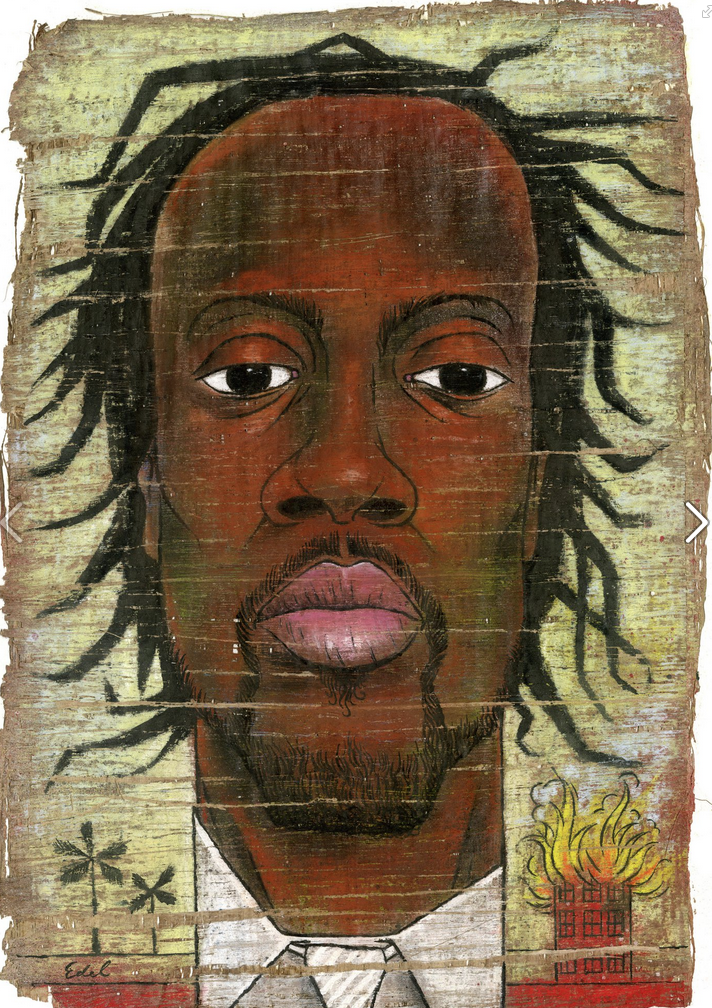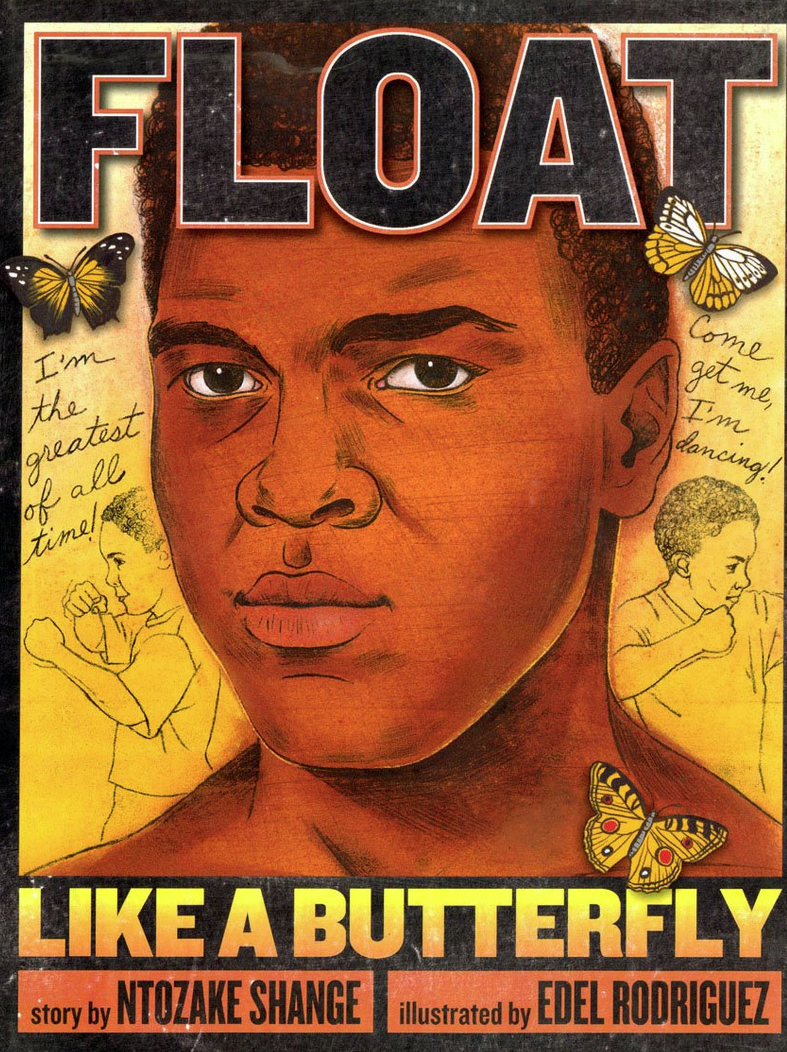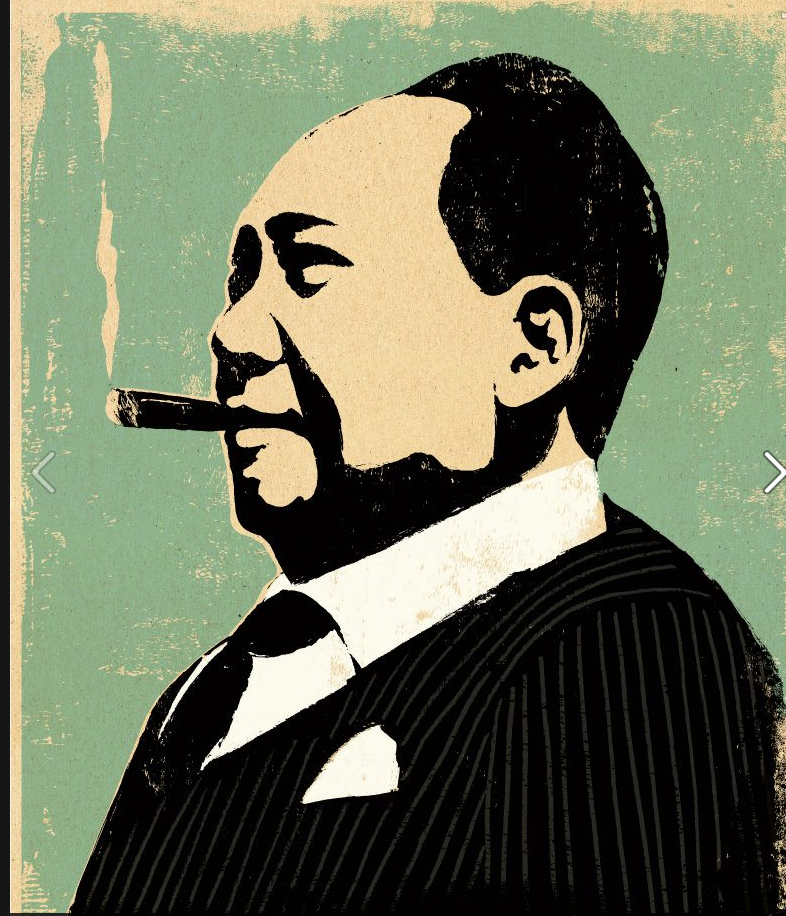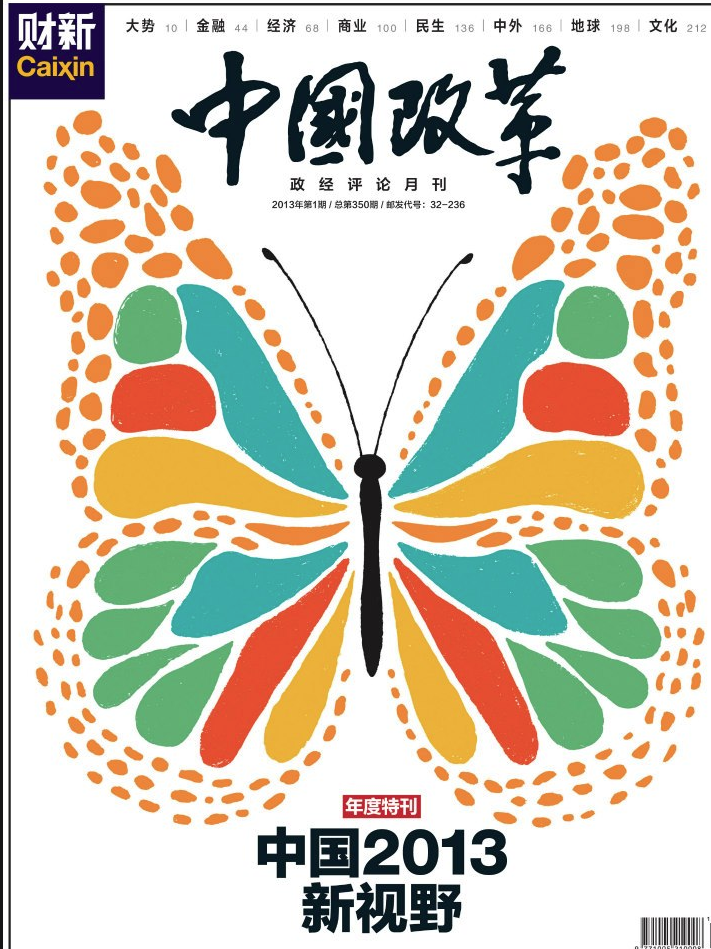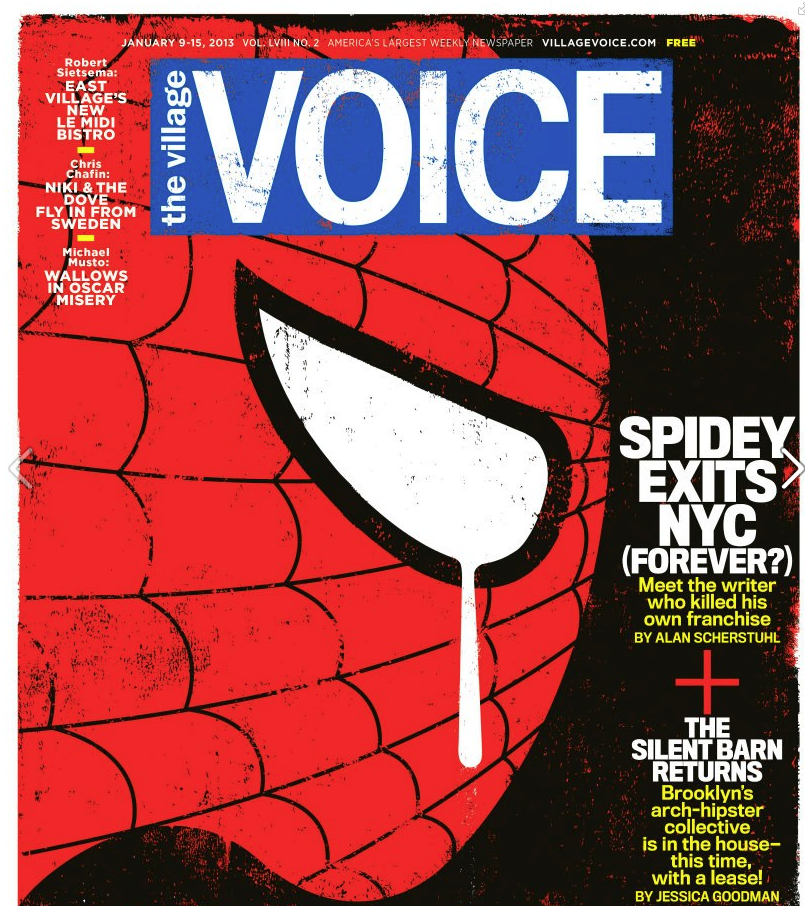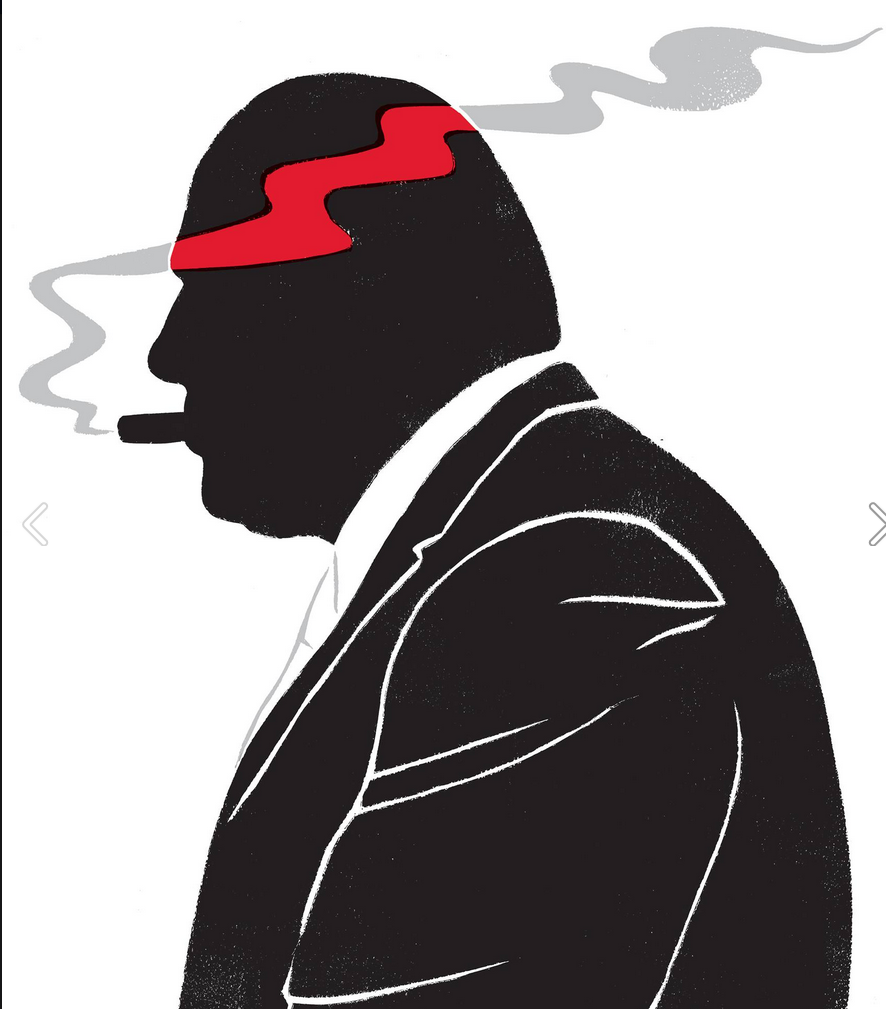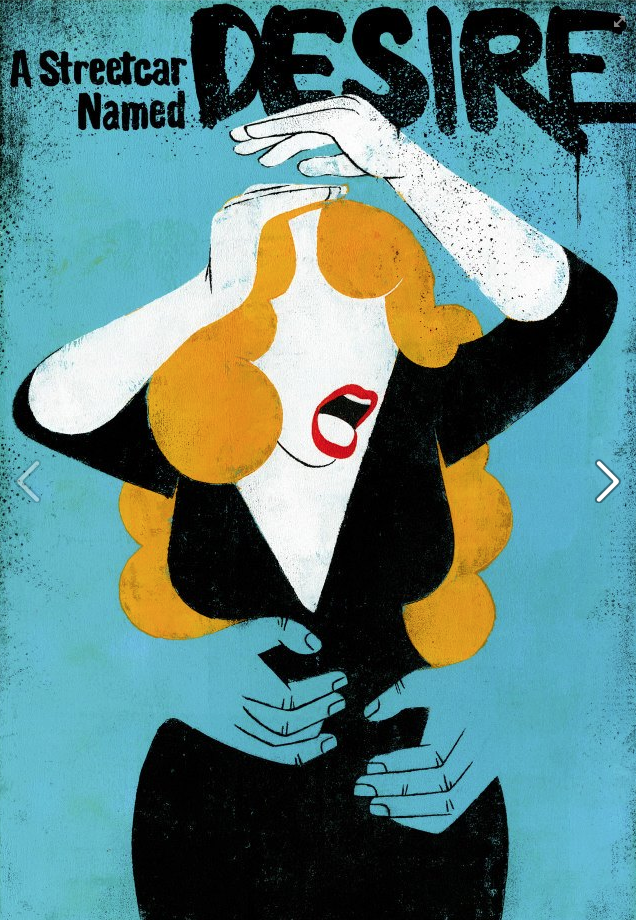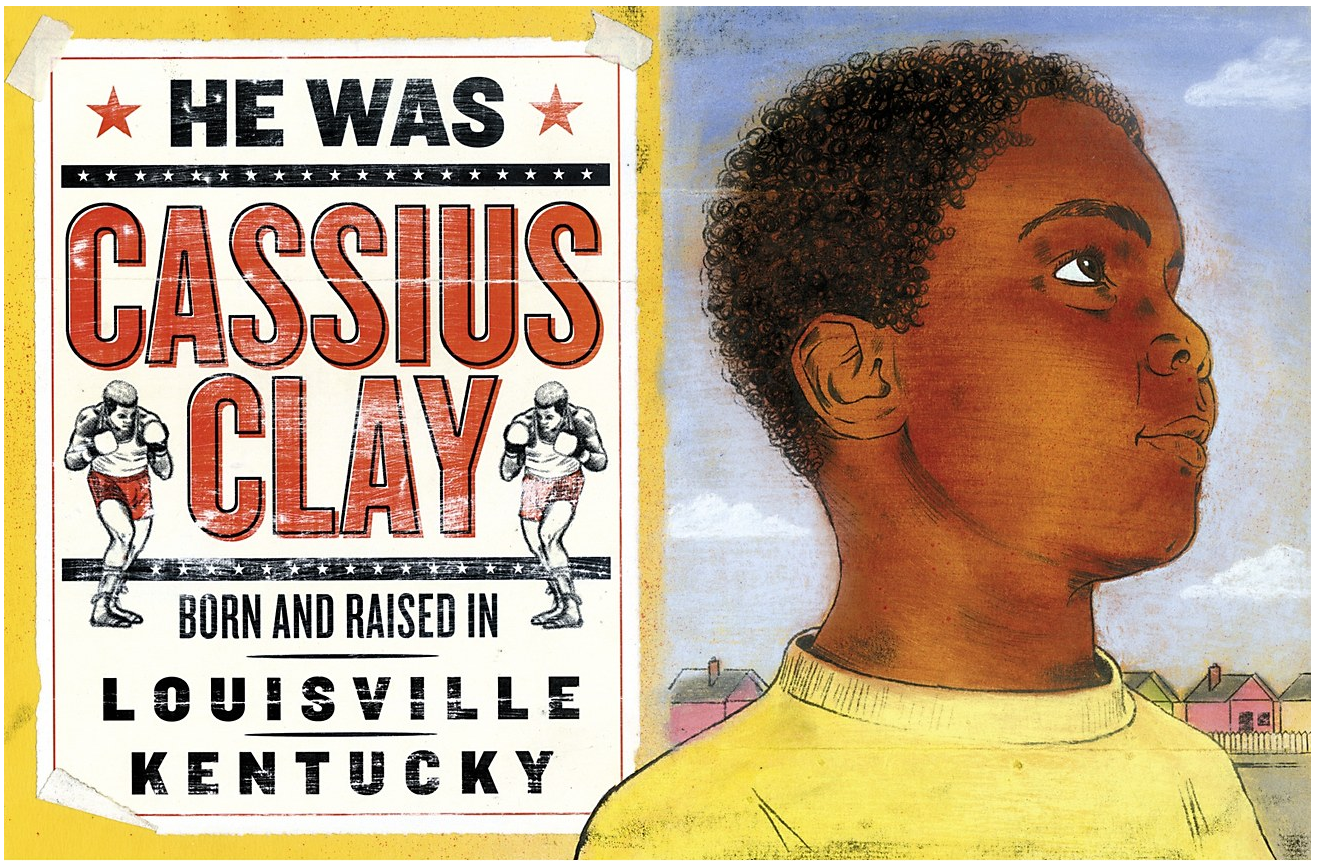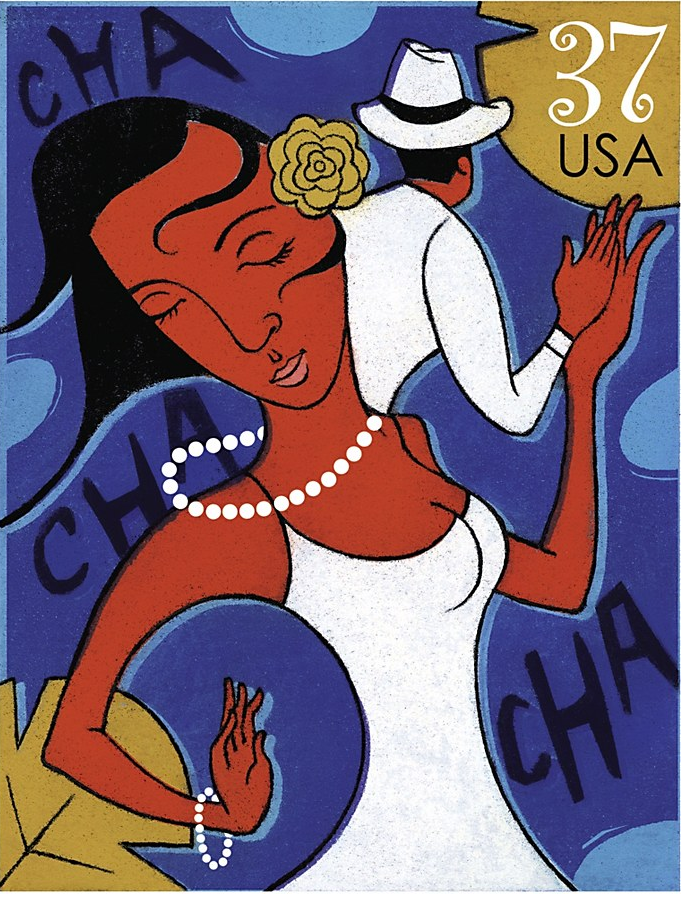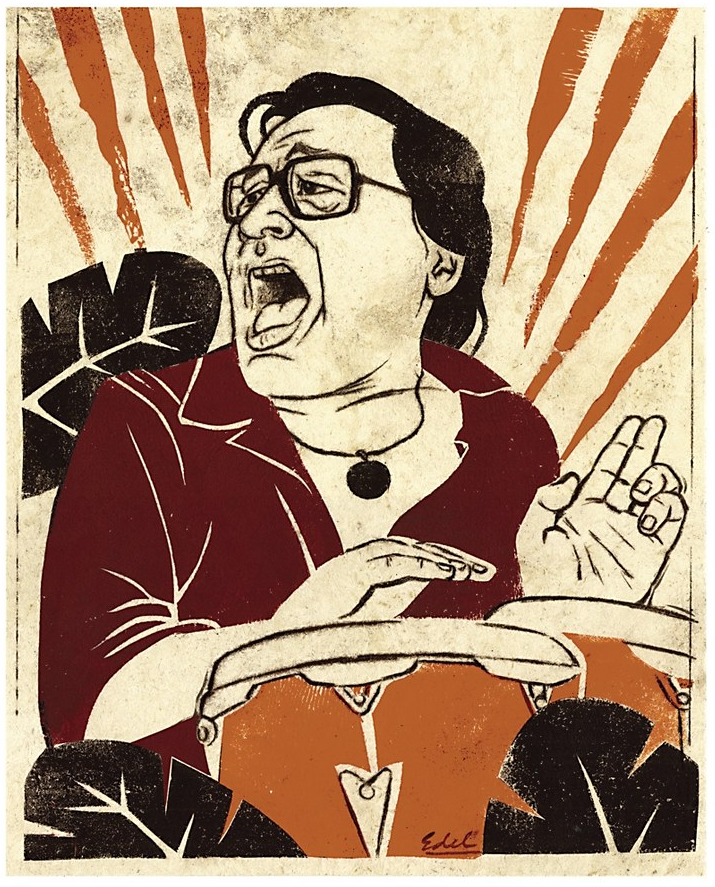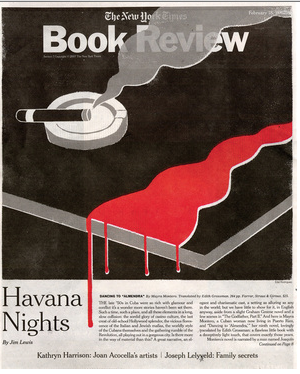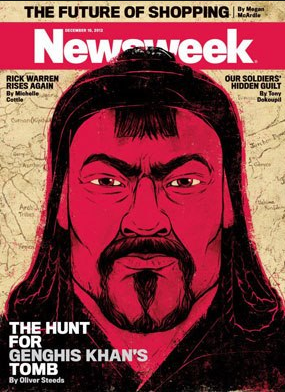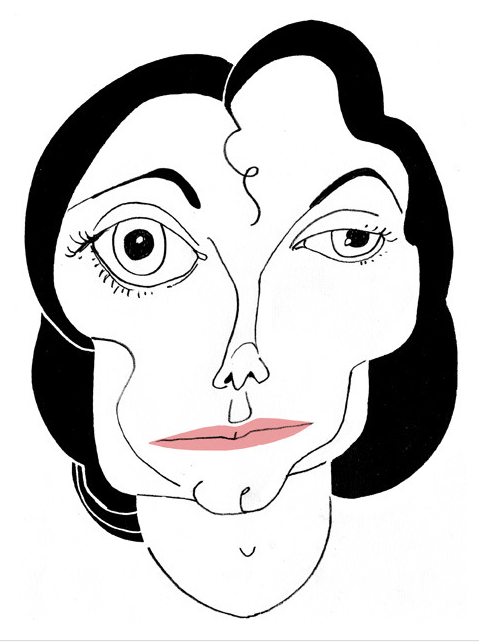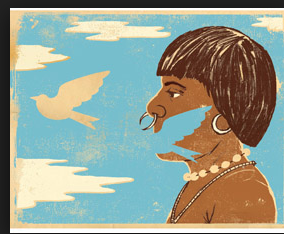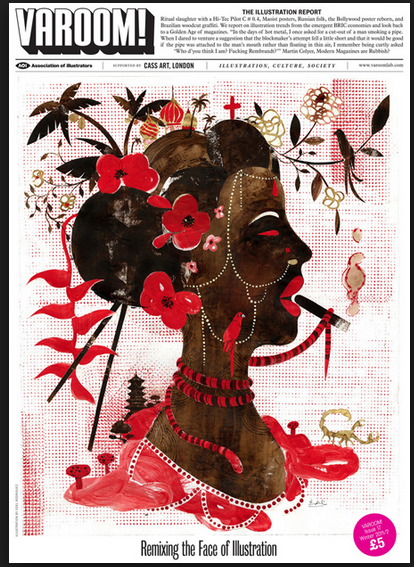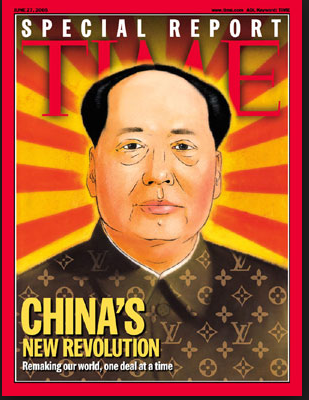In April 1980, a couple hundred Cubans, fed up with a bleak economy, stormed the Peruvian embassy in Havana demanding asylum, and over the next few days their numbers grew to over 10,000. In response, Fidel Castro opened the port of Mariel to anyone wishing to leave Cuba, anyone who could arrange to be picked up by boat, that is. Family and friends in the U.S. quickly organized themselves and sent hundreds of boats from Florida, in what became known as the Mariel boat lift. 120,000 people made it out, among them, a 9 year-old boy named Edel Rodriguez. How a nine year old boy starting from zero could go on to become one of the most celebrated illustrators in the U.S. is anyone’s guess.
Edel Rodriguez, graduated from New York’s Pratt Institute in 1994 and Hunter College’s MFA program in 1998. He has exhibited internationally with shows in L.A., Toronto, New York, Philadelphia, Dallas, and Spain. Edel’s paintings and graphic art are regularly published in The New Yorker, The New York Times, and on the covers of TIME, Newsweek and many other major publications. His work has been commissioned by book publishers, theaters and operas, and by clients such as Nike, MTV, Pepsi, and the Rock and Roll Hall of Fame. He is the recipient of a Gold and three Silver Medals from the Society of Illustrators, and a Bronze Cube from The Art Director’s Club for his theatre posters.
In 1980 during the Mariel boat lift, you and your family jumped on a boat and started a trip that put you on the path to a new life. What was on your mind during that trip from La Havana to Miami? Is there a particular image or feeling that stands out in your memory?
The pier in Havana was much higher than the boat, with the waves making the boat bob up and down. The one image or feeling I always remember is being loaded onto the ship, hanging in mid air, with someone hanging on to my arms above and someone else pulling my legs below. I felt like I was going to fall into the water at that time, but I was taken care of. I was exhausted from the ordeal after having spent a week at a Cuban detention camp as my family waited for permission to leave the island. When I was finally on the boat, I went to sleep and woke up sporadically during the night. I had never been on a boat, I remember seeing fish flying around the boat, jumping out of the water and flapping their wings. They were flying fish, something I’d never heard of. I also saw some dolphins for the first time. When I arrived in Key West, I was in awe of how bright and clean everything was—the streets, the cars, and the packaging on things like toothpaste and soda cans. I also remember eating many things for the first time, an apple, grapes, a pear. Trying to figure out how to eat them and the flavor of these new things made for a lasting memory.
It must have been very difficult for your family to arrive in a new country and start over with nothing. What can you say about your journey from there to being a world renowned illustrator?
It was a pretty difficult adjustment at first. When we arrived in the U.S., my parents began to miss our town and their own parents whom they had left behind. I remember walking in on them at times when they were very emotional about all of that and about adjusting to the language and customs of the U.S. I arrived in May, at the end of the school year. My parents didn’t know what to do with me that Summer so I ended up going along with my father to some of the odd jobs he was able to find at first. I worked with him at a flea market, at a junkyard, on a vegetable truck and painting apartments. Later on, he started a trucking business and I would spend my Summers with him on his truck. He always told me to study hard so I wouldn’t have to work on the truck or at the auto repair shops and junkyards we frequented. I’ve always thought that I learned many life lessons and even business instincts from my dad on that truck.
What is your favorite place on the planet? What is your favorite place in Latin America?
I’ve always loved going to Spain, and especially Barcelona. When I’m there I’m reminded of the roots of the culture I grew up in. My mother’s family were farmers in Cuba, but their ancestors had originally come from Spain. Many of the words and colloquialisms I heard as a child, or the food I ate (caldo gallego, fabada, chorizo) have their roots in Spain. It’s fun to walk around Spain and be reminded of family and childhood. The entire country reminds me how much the traditions of Cuba are grounded in this ancient European culture.
I’ve yet to travel through much of Latin America, but love the food of Colombia and Venezuela. I’ve visited a few spots in Mexico, Belize, and Honduras. My favorite is still a trip back to Cuba to visit family and discover some new places. Last year we headed West from my family’s house in the Havana countryside to the province of Pinar del Rio. The valley of Viñales there is one of the most spectacular sites I’ve seen in all my travels. It is definitely one of my favorite places now and want to go back again soon.
When traveling . . . Instagram or an old school sketchbook? How do you capture images and ideas?
Drawing and photography capture two different aspects of a place so I tend to do both when I travel. If there’s a quick moment that I want to capture then I take some photos. When I have some quiet time to take in a spot then I bring out my sketchbook. I’m mostly interested in color relationships, scale, characters, and a bit of a storyline about a place. I find I learn a lot about a country and its people by just sitting down, observing, and drawing.

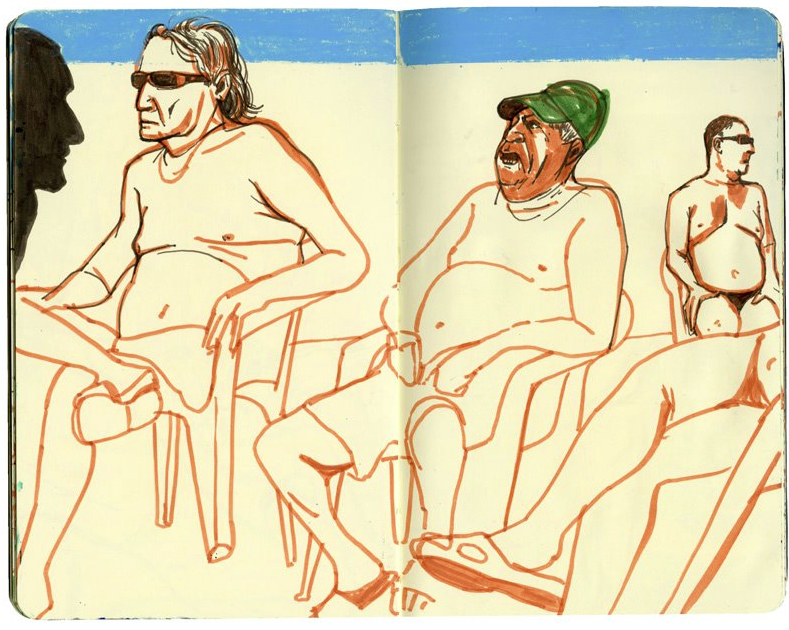
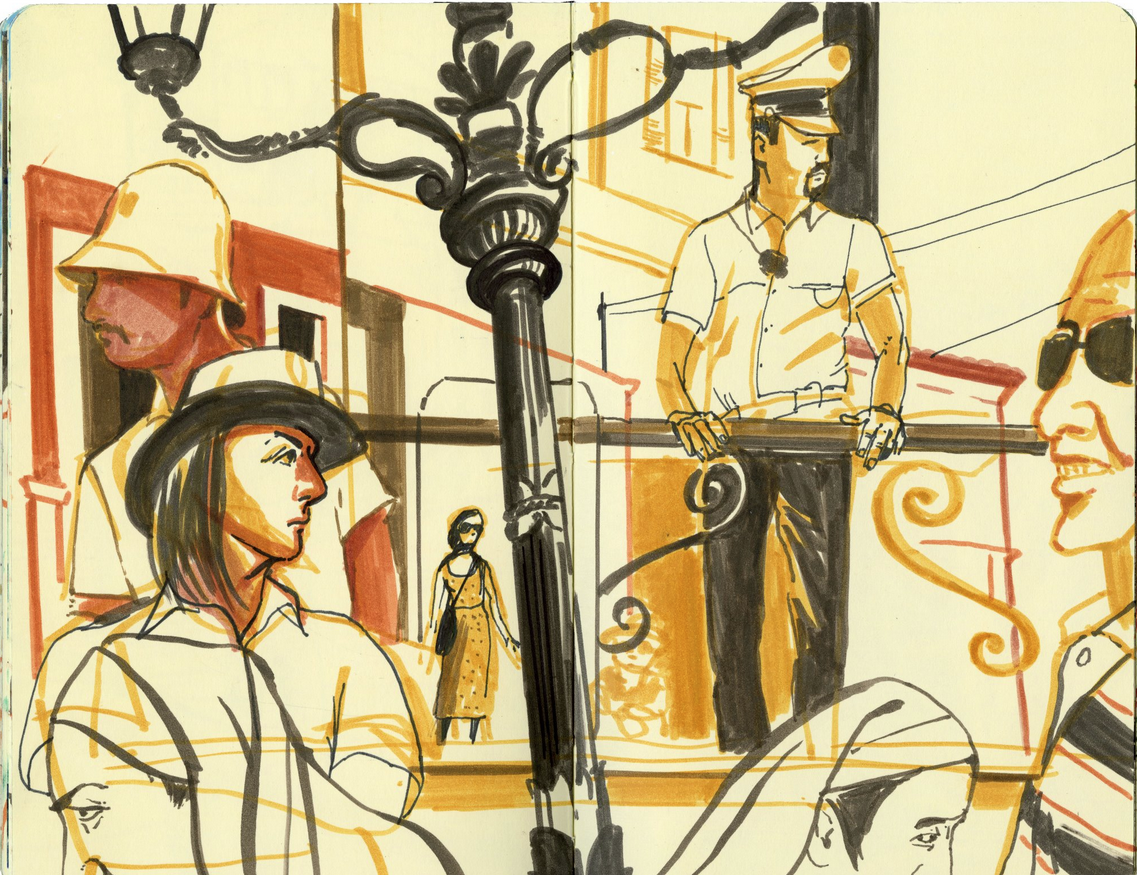
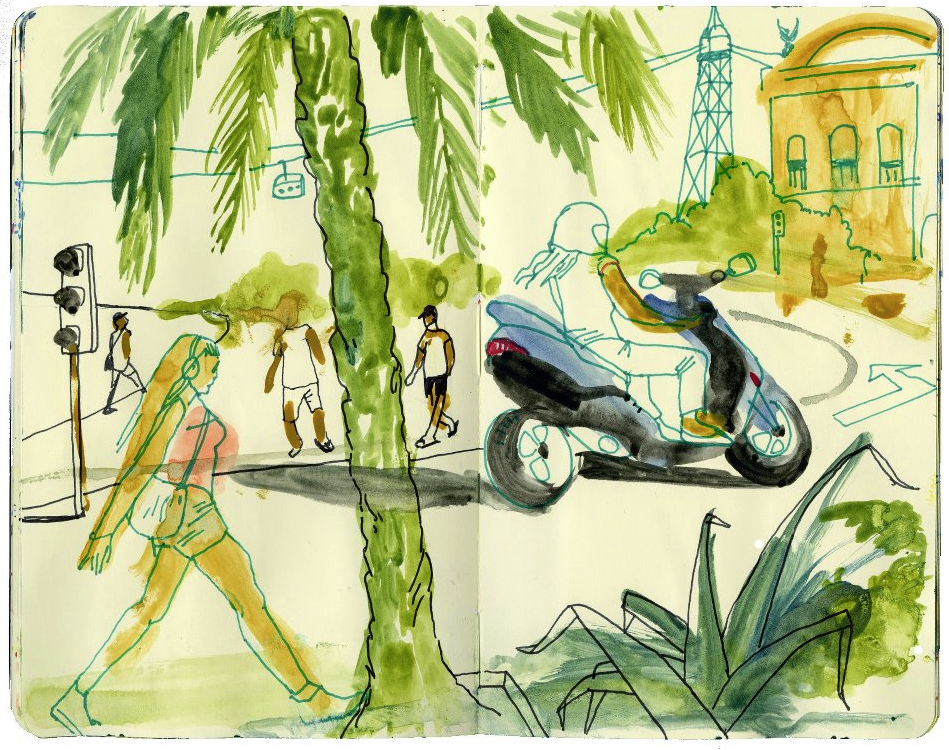
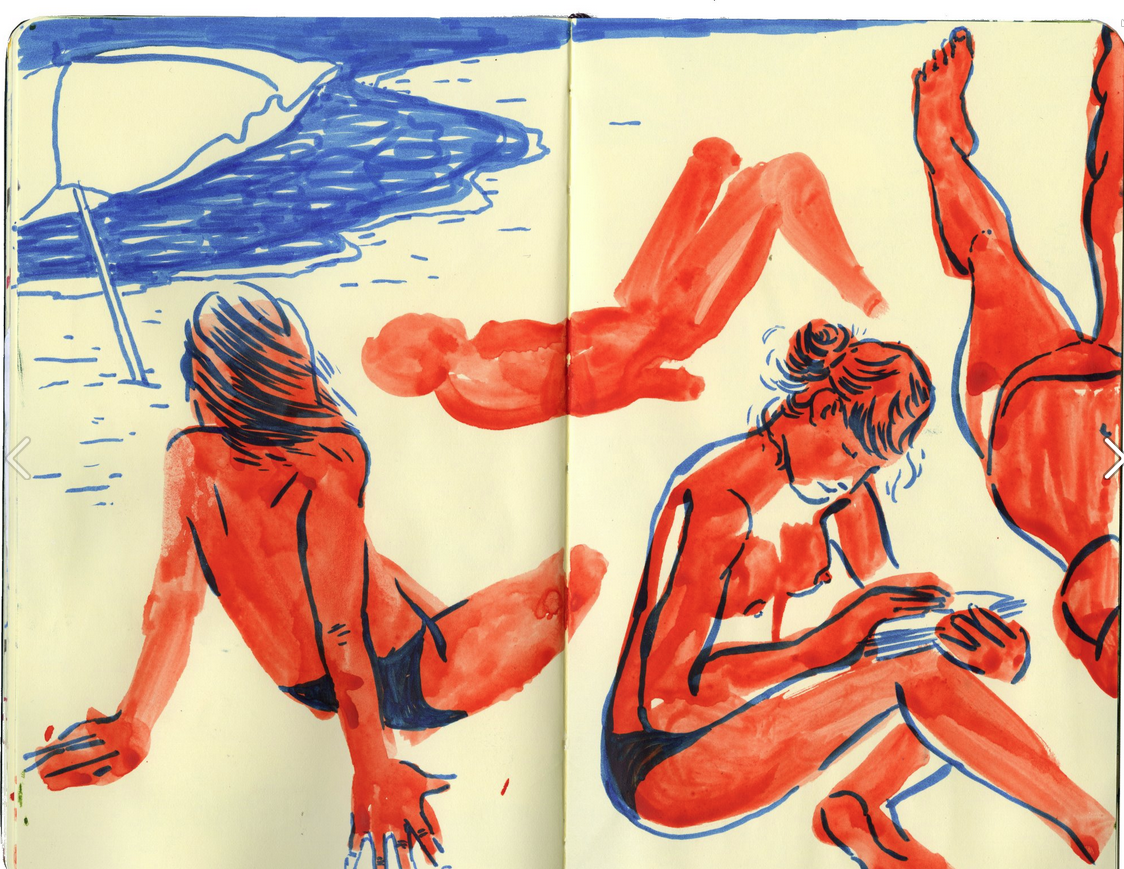
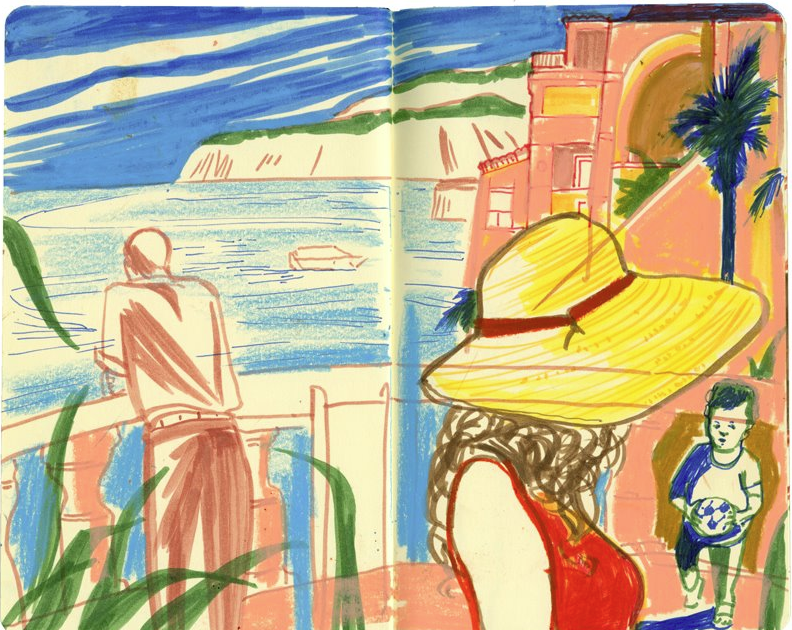
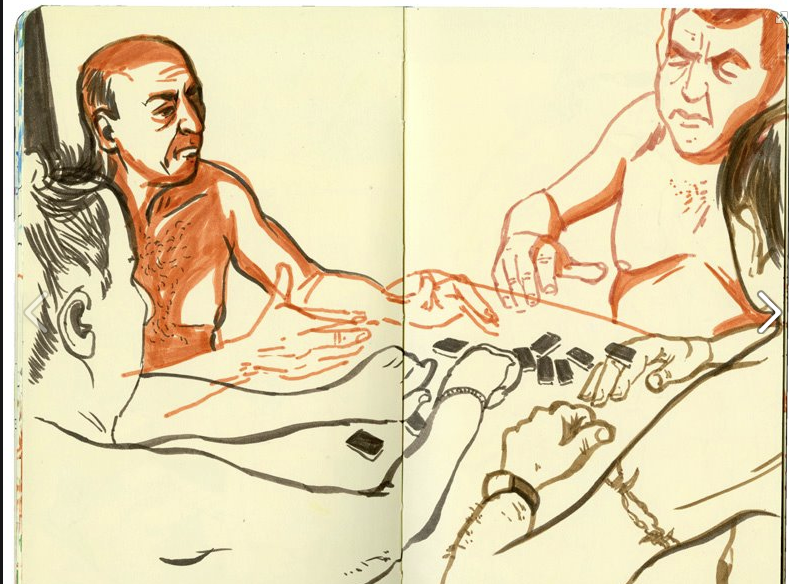
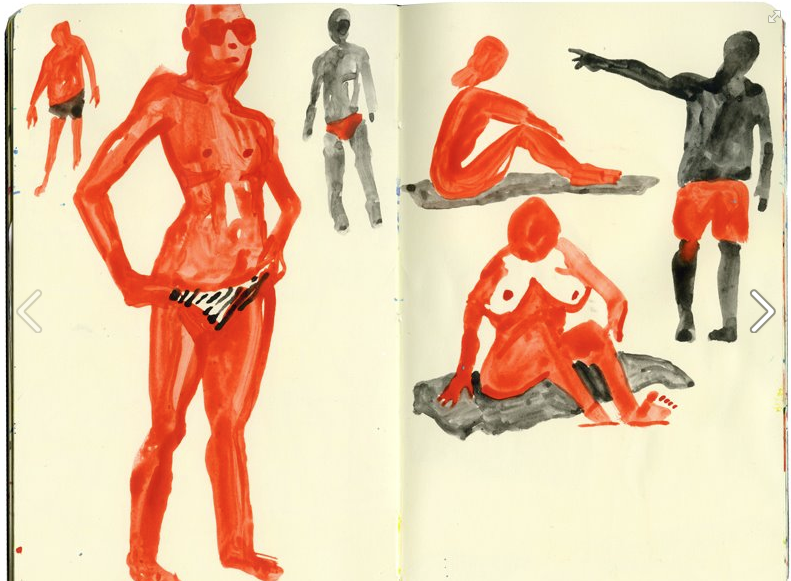
As an artist, what’s the most productive way for you to immerse yourself in a new place or culture?
Much of my itinerary is taken up by museum and architectural visits, I feel this gives me a good foundation about the place. Then I head out to restaurants and beaches. Marketplaces are also a great place to get immersed in the culture and atmosphere of a place. I also like visiting the houses of well-known artists. See their studios, the environment where they worked and so on. I spent a week in Giverny, where Claude Monet lived and worked in France. Wonderful little town, home and gardens.
Do you have cravings for Cuban food? Is there a particular dish you’re craving? Do you cook?
I don’t cook much, but I love Cuban food. Every time I go back home I ask my mom to make me “rabo encendido." It’s ox tail stewed for hours in a sofrito of onions, garlic, oregano and who knows what else. Served over white rice with a side of plantains. Also love a “media noche” sandwich, kind of like a traditional pressed Cuban pork, ham, and swiss sandwich on an egg roll with pickles and mustard. And then there’s “lechon asado,” the roast pork that we have at Christmas or New Year’s. I could go on.
You mentioned that you would like to work on a reportage story for a magazine, go somewhere and spend some time and tell the story as you see it. Has this happened yet? What kind of story would you imagine? What kind of place?
I think there are a lot of stories that magazines tell with photo essays that could have a different impact if they were told through drawings. I created an illustrated essay for Time magazine years ago, titled “A Vision of Cuba,” a detailed accounting of stories I came across while driving around Cuba in the 1990s, soon after the Soviet Union had cut off financial support for the country. It was a story about the changes that were happening within the country, things that much of the world was not aware of. I can see travel or culture-related stories about other countries illustrated the same way: a look behind the scenes of a certain film production, a story about the goings on in the kitchen of a well-known restaurant, etc. News and war stories could also be told in a similar way, highlighting the people and the situations they encounter on a daily basis.
I once read in an interview about your first visit to the Illustrators’ Society, feeling like, with all the Anglo names on the wall, you would have to change yours in order to “make it.” How do you feel about your identity as a “Rodriguez” now? How has your sense of what’s possible, in terms of career success, for a young Latino today evolved?
Having grown up in Cuba as a child and later in Miami as a teenager I never felt different, like I was part of a minority or any of that. Most of the names where I grew up were Perez, Garcia, Ramirez, etc., so I never thought about these things. Later, when I was 19, I left for New York City, and felt like I had to work much harder to become part of the place. I think someone at that age always starts wondering where they fit in and if their dreams are possible. I guess I started looking for role models or teachers in the art field with a similar background to mine and didn’t find any, so I began to wonder if this was possible for me. Over the last 20 years things have changed quite a bit, if anything I think diversity is encouraged and wanted nowadays.
You left behind your full-time job at Time magazine to dedicate yourself to personal projects and family. What are you up to now?
I stay pretty busy with a combination of work for gallery shows and commissions from magazines, book companies and advertising clients. I’m currently making new work for an upcoming gallery show in Chicago at Curly Tale Fine Art and writing an illustrated memoir of my childhood growing up in Cuba during the early years of the Revolution.
Is there anything you’ve left undone in your career? Any challenge you’re hungry to take on?
I used to design and build sets for the theater when I was in college. Creating sets for a professional Opera or Theater company would be a welcome challenge and a unique way to transform my work into a complete environment.
Photo by Glenn Glasser.


